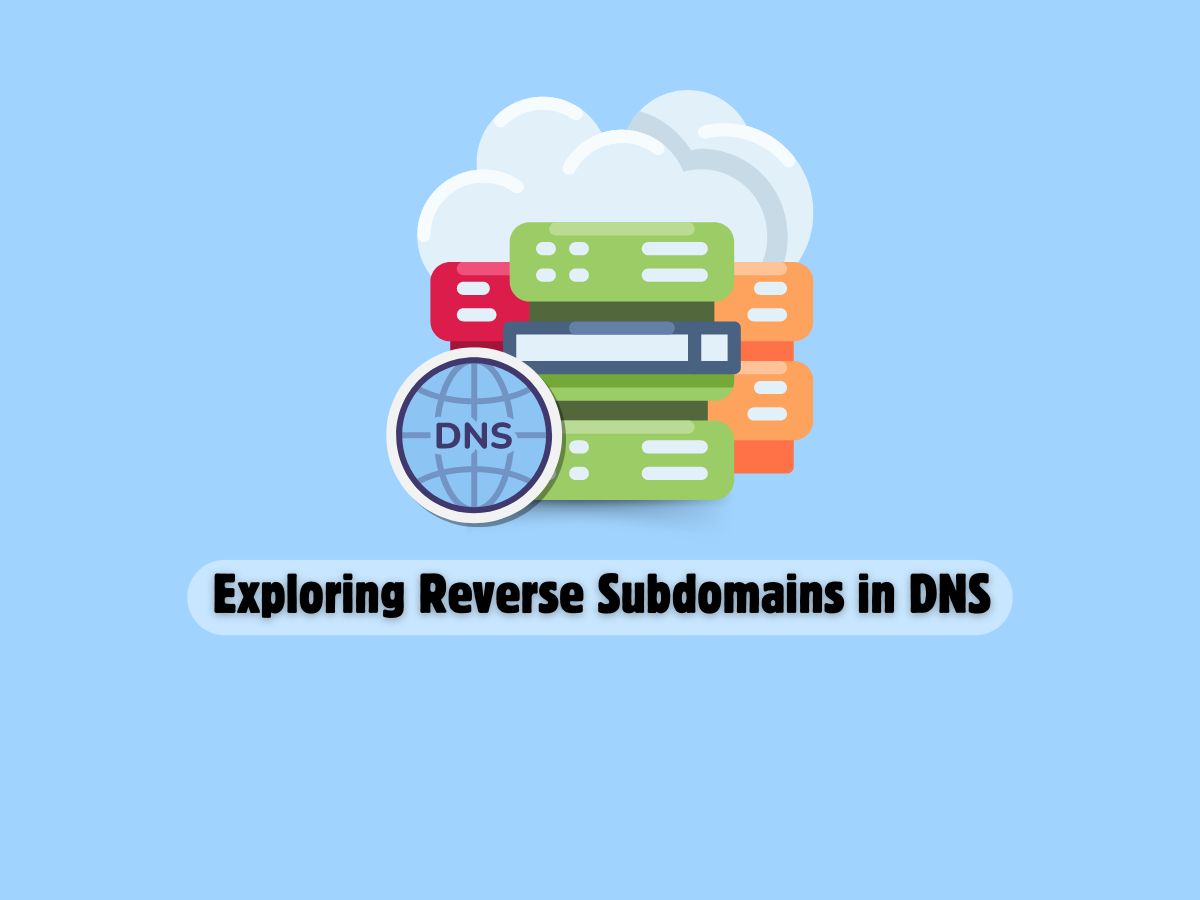
A Deep Dive into Reverse Subdomains and Their Use in the Domain Name System (DNS)
The Domain Name System (DNS) is a fundamental component of the internet infrastructure, responsible for translating human-readable domain names into machine-readable IP addresses. While most DNS discussions focus on forward resolution (converting domain names to IP addresses), reverse DNS is equally important. It plays a key role in certain scenarios, especially with reverse subdomains. Both are essential for different purposes. In this article, we’ll take a closer look at reverse subdomains and their significance in the DNS ecosystem.
Understanding Reverse DNS
Reverse DNS, also known as reverse mapping, is the process of mapping IP addresses to domain names. Unlike forward DNS, which converts domain names (e.g., www.example.com) to IP addresses (e.g., 192.0.2.1), reverse DNS does the opposite. It converts IP addresses back into their corresponding domain names. It associates IP addresses with domain names, allowing network administrators to determine the domain associated with a specific IP address.
Reverse Subdomains
A reverse subdomain is a subdivision of the reverse DNS hierarchy that organizes IP addresses into smaller, more manageable segments. It involves reversing the octets of an IP address and appending the “.in-addr.arpa” domain to create a domain name. For example, the reverse DNS domain for the IP address 192.0.2.1 would be represented as “1.2.0.192.in-addr.arpa.”
Reverse subdomains are typically used in conjunction with PTR (Pointer) records, which are DNS resource records used to map IP addresses to domain names. Each PTR record corresponds to a specific IP address and points to the corresponding domain name. By querying reverse DNS with an IP address, network administrators can retrieve the PTR record. This reveals the domain name associated with the IP.
Use Cases for Reverse Subdomains
1. Email Authentication: Reverse DNS is commonly used in email authentication mechanisms, such as SPF (Sender Policy Framework) and DKIM (DomainKeys Identified Mail). Email servers often use reverse DNS lookups to verify the domain of the sending IP address. This helps prevent email spoofing and spam.
2. Network Troubleshooting: Reverse DNS can be valuable for network troubleshooting and diagnostics. By performing reverse DNS lookups on IP addresses, administrators can identify the domain names of devices or servers accessing their network, facilitating troubleshooting and security analysis.
3. Logging and Monitoring: Reverse DNS information can enhance logging and monitoring systems by providing additional context about network activity. By associating IP addresses with domain names, organizations can gain insights into the origins of network traffic and identify potential security threats or unauthorized access attempts.
4. Geolocation and Analytics: Geolocation and analytics tools can leverage reverse DNS data. By correlating IP addresses with domain names, organizations can analyze the geographic distribution of their website visitors or network traffic, helping to optimize content delivery and marketing strategies.
Conclusion
Reverse subdomains play a crucial role in the DNS ecosystem, enabling the reverse mapping of IP addresses to domain names. By organizing IP addresses into hierarchical domains and associating them with PTR records, reverse subdomains facilitate various network operations, including email authentication, network troubleshooting, logging, and geolocation. Understanding the significance of reverse subdomains and their use cases is essential for network administrators and DNS practitioners seeking to optimize the performance, security, and reliability of their networks and services.







